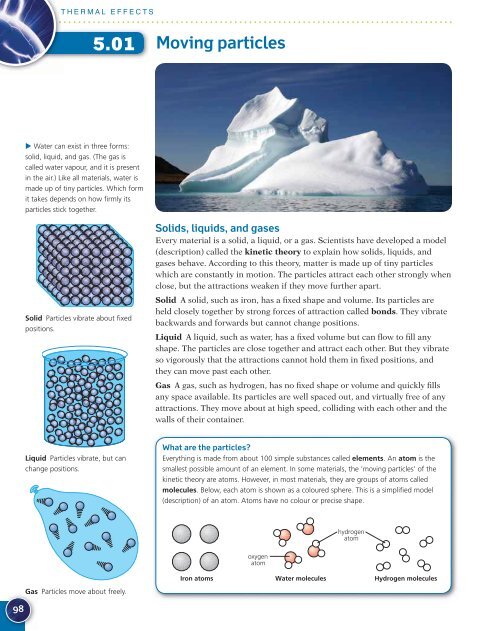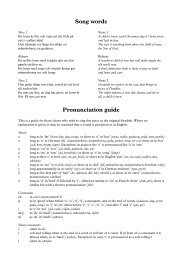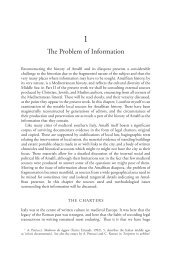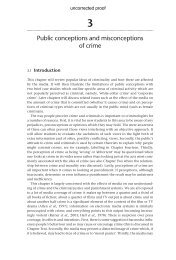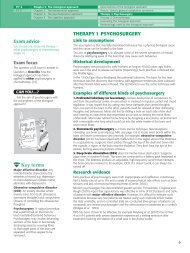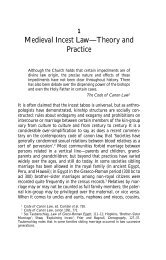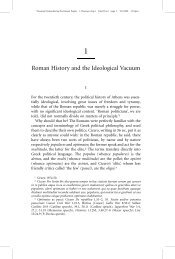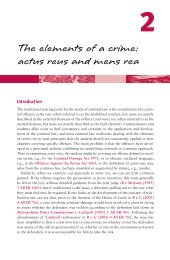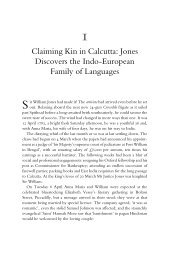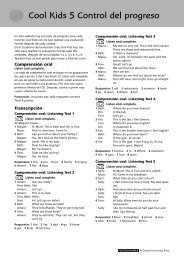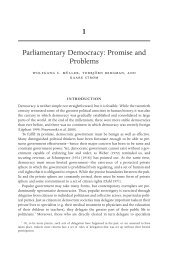Temperature (1) - Oxford University Press
Temperature (1) - Oxford University Press
Temperature (1) - Oxford University Press
You also want an ePaper? Increase the reach of your titles
YUMPU automatically turns print PDFs into web optimized ePapers that Google loves.
98<br />
THERMAL EFFECTS<br />
5.01<br />
� Water can exist in three forms:<br />
solid, liquid, and gas. (The gas is<br />
called water vapour, and it is present<br />
in the air.) Like all materials, water is<br />
made up of tiny particles. Which form<br />
it takes depends on how firmly its<br />
particles stick together.<br />
Solid Particles vibrate about fixed<br />
positions.<br />
Liquid Particles vibrate, but can<br />
change positions.<br />
Gas Particles move about freely.<br />
Moving particles<br />
Solids, liquids, and gases<br />
Every material is a solid, a liquid, or a gas. Scientists have developed a model<br />
(description) called the kinetic theory to explain how solids, liquids, and<br />
gases behave. According to this theory, matter is made up of tiny particles<br />
which are constantly in motion. The particles attract each other strongly when<br />
close, but the attractions weaken if they move further apart.<br />
Solid A solid, such as iron, has a fixed shape and volume. Its particles are<br />
held closely together by strong forces of attraction called bonds. They vibrate<br />
backwards and forwards but cannot change positions.<br />
Liquid A liquid, such as water, has a fixed volume but can flow to fill any<br />
shape. The particles are close together and attract each other. But they vibrate<br />
so vigorously that the attractions cannot hold them in fixed positions, and<br />
they can move past each other.<br />
Gas A gas, such as hydrogen, has no fixed shape or volume and quickly fills<br />
any space available. Its particles are well spaced out, and virtually free of any<br />
attractions. They move about at high speed, colliding with each other and the<br />
walls of their container.<br />
What are the particles?<br />
Everything is made from about 100 simple substances called elements. An atom is the<br />
smallest possible amount of an element. In some materials, the ‘moving particles’ of the<br />
kinetic theory are atoms. However, in most materials, they are groups of atoms called<br />
molecules. Below, each atom is shown as a coloured sphere. This is a simplified model<br />
(description) of an atom. Atoms have no colour or precise shape.<br />
oxygen<br />
atom<br />
hydrogen<br />
atom<br />
Iron atoms Water molecules Hydrogen molecules


